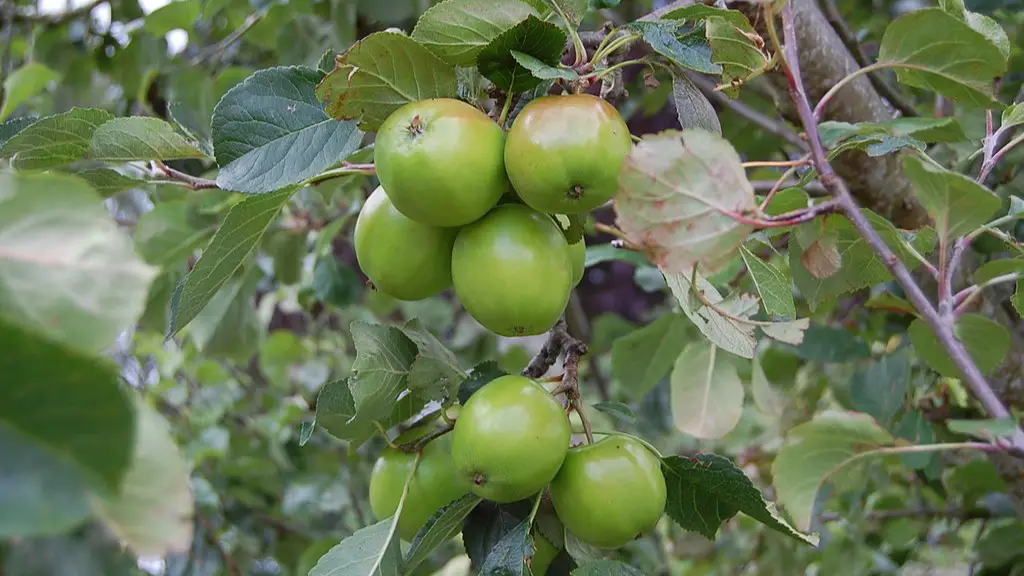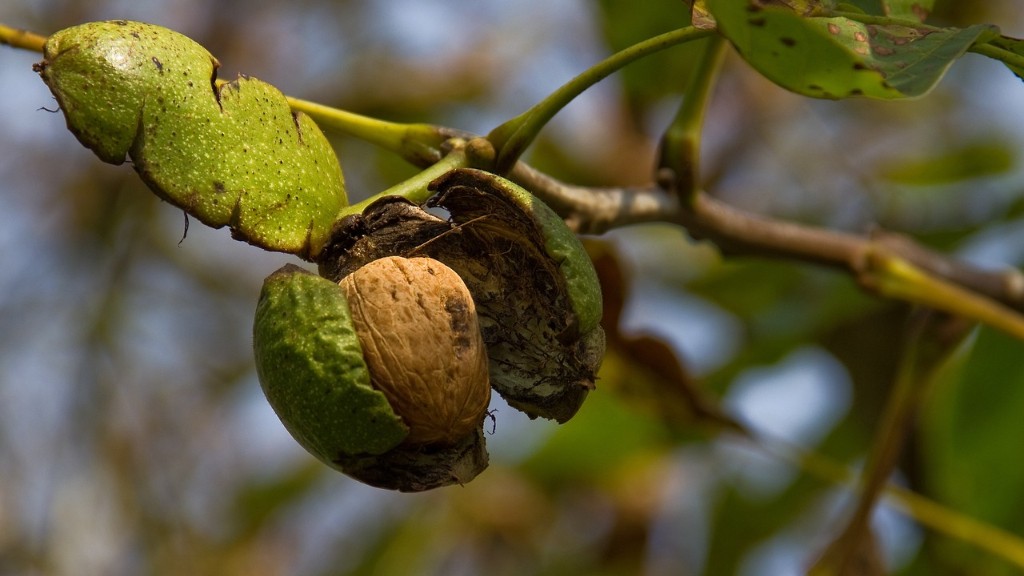How much water does an avocado tree need? With its height soaring to up to 80 feet and 3-meter thick trunks, an avocado tree is an imposing sight in any garden. While adding an exotic touch to the landscape, it also has practical potential, as more and more people are discovering the joys of harvesting their own avocados. But, with owning one of these grandiose trees come responsibility – in particular, proper water management.
A moderate amount of water is needed to maintain an avocado tree’s health. This does not mean that the tree should be overwatered; in fact, avocado trees may become root-bound or die if given too much water. The key is to provide just enough water to keep the tree alive – and healthy.
On a regular basis, the tree should be deeply watered by slowly pouring water around its circumference, till the water reaches a 30 cm soil depth. If only a shallow well is dug, then this indicates that the soil is waterlogged and the tree requires drainage holes dug around it to facilitate water flow.
In hot and dry climates, the watering frequency increases. An avocado tree will require watering three times a week for about one to three hours, depending on the temperature. These water sessions should be spread out, as it is better for a tree to receive fewer, longer water periods instead of more frequent, shorter ones.
Experts emphasize that the rainfall alone is not likely to be enough for an avocado tree and additional irrigation is necessary. Also, it is advisable to check soil moisture at least once a week and adjust the watering frequency accordingly. For example, if the soil is damp, then the tree has enough water.
The quality of water that you give your avocado tree is also important. Avocado trees prefer rainwater, as it has more oxygen, is more pure and free of heavy metals and other elements, and has less calcium, which can create problems over time. Unfortunately, this kind of water is not always available, and in such cases, a sprinkle of calcium is added, to change the pH levels of the soil and make it more friendly towards the avocado tree.
At the same time, it is also essential to be aware of neglecting the proper watering of an avocado tree, as this can lead to wilting, an accumulation of salt on the leaves and root damage. The best way to prevent any of these is by regularly monitoring the amount of water given to the plant.
Nutrition for the Tree
As is the case with all plants, nutrition plays an important role in the health of an avocado tree. Macronutrients should be regularly supplemented, as they are vital for a successful harvest. Additionally, micronutrients are beneficial to the avocado tree as they help improve both the quality and quantity of the harvest, as well as the overall health of the tree.
The most recommended fertilizer for avocado trees is one with a balanced ratio of nitrogen, potassium and phosphorus, as these are the three main macro-nutrients that the tree needs. Fertilizers with micronutrient content are also helpful, as they help with the development of the fruit and foliage.
In order to get the best results, the application of fertilizer must be personalized according to the soil conditions, avocado variety and climate. For instance, in tropical climates, an avocado tree will usually not require additional fertilization, whereas in arid or semi-arid climates, supplemental nutrition will be necessary.
Regular monitoring of the soil acidity is also necessary, as some fertilizers may increase the acidity levels. When the soil is too acidic, lime should be added to neutralize the pH levels.
Discoloration of Leaves
One common sign that an avocado tree is being overwatered is the discoloration of the leaves. This is typically seen in the form of yellowing or spotting. These symptoms may be caused by an array of factors, ranging from too much watering to a deficiency in certain vital elements. It is important to diagnose the cause of the discoloration so that it can be properly treated.
In cases when water is the cause, it is recommended to gradually decrease the frequency of water sessions until the plant is receiving the optimal amount. On the other hand, if the discoloration has been caused by a nutrients deficiency, then fertilizer should be applied according to the recommendations specific to the variety of avocado that is being grown.
Additionally, trace elements should also be monitored and supplemented when necessary in order to ensure that the soil is properly balanced. Nitrogen, phosphorus and potassium are the key elements that need to be managed and adjusted accordingly.
For an avocado tree to thrive and ultimately produce the most delicious avocados, attention to the water needs, nutrition and trace element levels must be maintained. Through careful observation, owners will be able to ensure that the tree receives just the right amount of water and nourishment in order to remain healthy, increasing the likelihood of a successful harvest.
Adaptation to Climate Changes
Avocado trees are highly sensitive to environmental conditions and particular climates, making their adaptation to climate changes crucial for their growth and development. Most avocado cultivars are able to tolerate some heat, but temperatures outside the optimal range can lead to issues such as poor fruiting or leaf shed.
As such, it is important for avocado trees to be planted in the right climate, as this will help ensure their adaptation to climate changes. In general, an avocado tree needs temperatures between 18°C and 25°C in order to maintain optimal health, so those living in colder climates should consider using protective measures such as mulch, tree wrapping and winter watering to maintain soil temperature.
Furthermore, excessive cold temperatures can also damage an avocado tree if the tree blossoms when the temperatures are below freezing. Precipitation can also affect the growth of an avocado, as too much rain can lead to root rot, while too little can result in damage to the tree’s leaves.
To combat these risks, avocado growers should constantly monitor their trees in order to maintain optimal conditions, allowing the tree to survive and thrive in its environment.
Pest and Disease Control
Avocado trees can be prone to various pests and diseases. Though many of these issues can be easily managed or prevented with proper care, proactive steps should be taken to avoid them altogether.
The most common pests and diseases that affect avocado trees include root rot, anthracnose, sourwood, black spots and scale. In order to manage these pests and diseases, it is important to understand the cause and appropriate treatment for each one.
Using proper growing techniques is a great place to start, as this will help promote healthy plant growth, which in turn is conducive to pest and disease prevention. In addition, preventative measures such as crop rotation and soil management can also be taken to ward off potential problems.
By keeping an eye out for potential signs of pest or disease activity, growers will be able to better manage their trees and reduce the spread of negative impacts. In some cases, the use of insecticides, fungicides and other crop protection methods may be necessary, but vigilance is still key.
Harvesting Avocados
The key to harvesting delicious and juicy avocados is understanding the optimal ripening period for each variety. In general, a ripe avocado should be firm but should give slightly when pressed. It should not be overly soft or mushy, as this indicates over-ripeness and the avocado is likely to have lost some of its nutrients and flavour.
In some cases, it may be possible to accelerate the ripening process. To do this, place the avocado in a paper bag overnight, or in a place with some warmth and humidity. The heat will help promote the ripening process, but if left in such a setting for too long, it can also lead to over-ripening.
When it comes to harvesting the avocados, it is important to be gentle and patient. The fruit should not be picked too forcefully or too early, as this can damage the tree and reduce the potential yield. Rather, the tree should be carefully observed and the avocados should be allowed to ripen naturally until they can be harvested without damaging the tree.
With the right care, an avocado tree can provide its grower with abundant harvests for years to come. Proper watering and nutrition, as well as maintaining optimal pest and disease control is essential for encouraging growth and successful yields.




